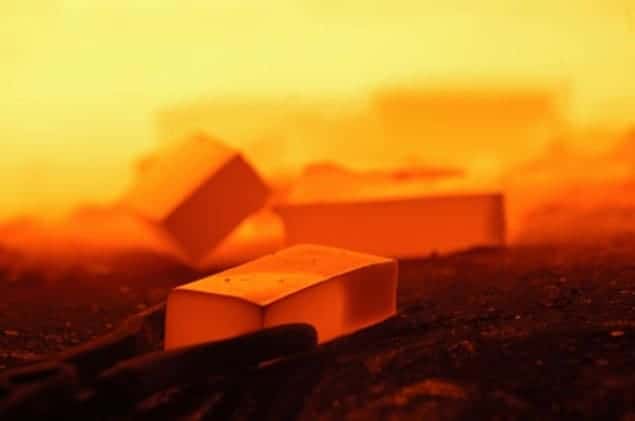
Heat normally flows from hot to cold, but now physicists in Japan and Germany have shown that spin waves can reverse the flow. The team fired microwaves at one end of a crystal, which instead of heating up, stayed cool. Meanwhile, some distance away at the other end of the crystal, the temperature rose – with heat being transported from the cool end to the hot end by spin waves. The team believes that the results could lead to the development of new devices that use heat and spin to store and process information.
Spin caloritronics is an emerging branch of spintronics dealing with the interaction between heat, charge and spin. Interest has been stimulated by recent discoveries. In 2008, for example, researchers led by Kenichi Uchida, then at Keio University in Japan, reported that placing a metallic magnet in a temperature gradient could produce a pure “spin current” – a flow of electron spins without bulk movement of electrons.
Spin-wave conveyer
In this latest work researchers in the same group – now based at the Institute for Materials Research at Tohuku University – have demonstrated the converse effect in a crystal of yttrium-iron garnet. The material was placed in a magnetic field and a spin current was made to flow across it. Microwaves were fired at the bottom of the sample. These would normally excite thermal oscillations, which would increase the temperature on the bottom of the crystal. However, when the microwaves are within a specific range of frequencies, most of the energy is converted into oscillations of the aligned spins of the surface layer called Damon–Eshbach waves. The team found that these spin waves are capable of carrying much of the absorbed energy from one end of the crystal to the other.
However, these waves occur on both the top and bottom of the crystal, and the waves on the top travel in the opposite direction. As a result, energy that travels out along the bottom surface of the crystal would normally be brought straight back along the top – preventing heat from moving in just one direction. To stop this from happening, the researchers had to ensure that the spin waves “dumped” most of their energy at the other end as heat – and returned to the microwave-heated region with very little energy. This is much like a baggage conveyor with the handlers at one end and the freshly disembarked passengers at the other – a few unclaimed bags come back to the handlers, but the net flow of baggage is in one direction.
The thick of it
The researchers made such a conveyer by using a relatively thick crystal. In such samples the spin waves struggle to move through the bulk to get from the bottom to the top of the crystal. Most of the spin-wave energy is lost to the crystal lattice as phonons, making the opposite end hotter than the end bombarded by microwaves. Yttrium-iron garnet is a poor thermal conductor, so phonons diffuse only slowly away from where they are created, which further enhances the effect.
“In our results,” says lead author Toshu An, “we take the place of heat generation far from the actual heat source. We think that could be used to push away the heat generation and keep a device cool.”
Electrical and computer engineer Daniel Stancil at North Carolina State University says most experiments with spin waves (such as those in information theory) are done with thin films to prevent losses to lattice phonons. “Ostensibly every experiment to absorb end reflections will have some element of heating up the end, but I don’t think anyone’s thought to look at it that way,” he says. “This is, I think, a novel mechanism for moving energy from one point to another and then heating up the far end.” He is sceptical about short-term applications, however. “If I had a transistor or some circuit that was generating a lot of heat,” he says, “it’s not at all clear to me how you would put something else on there that would take that heat, turn it into spin waves and propagate it away.”
The research is described in Nature Materials.



